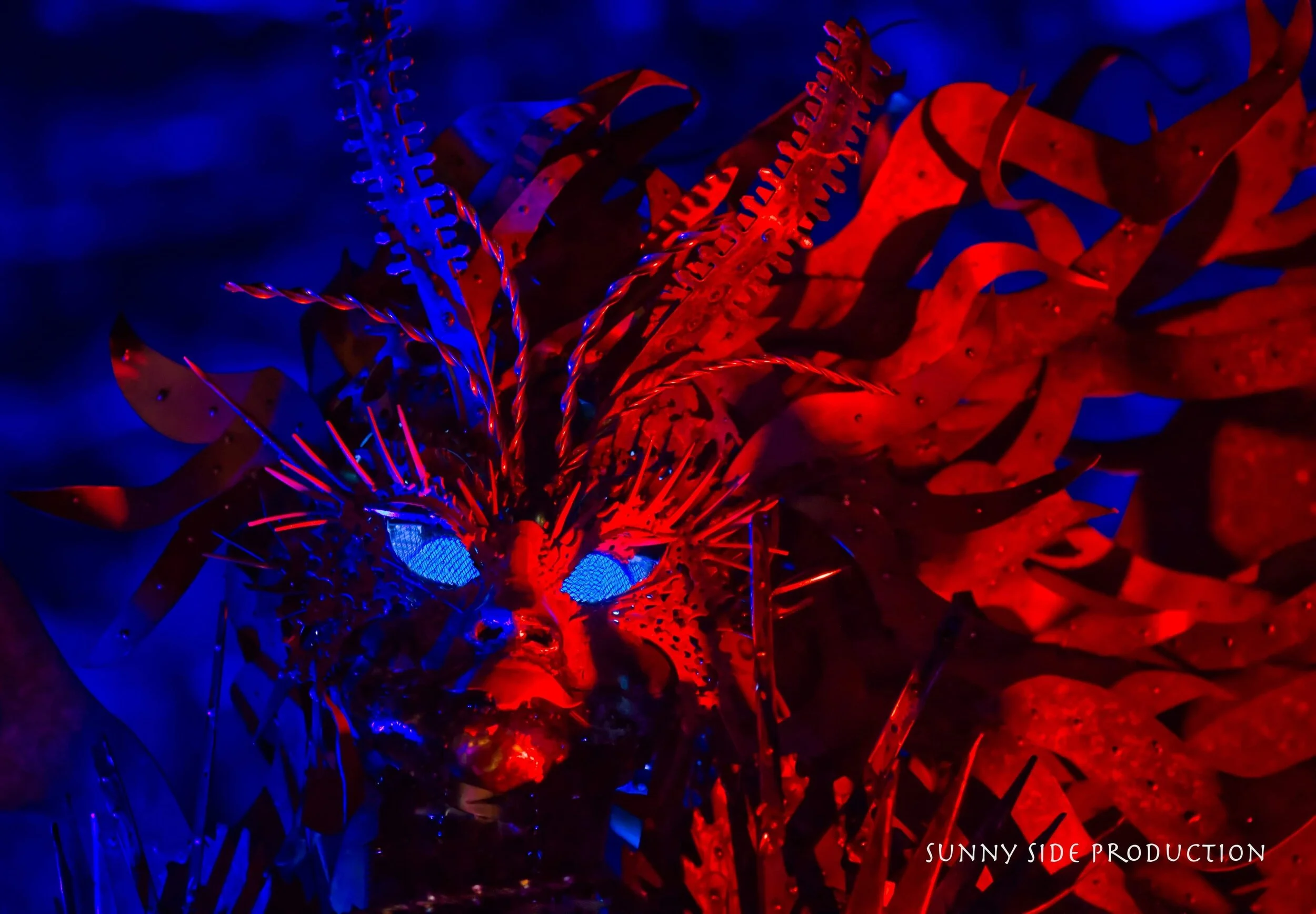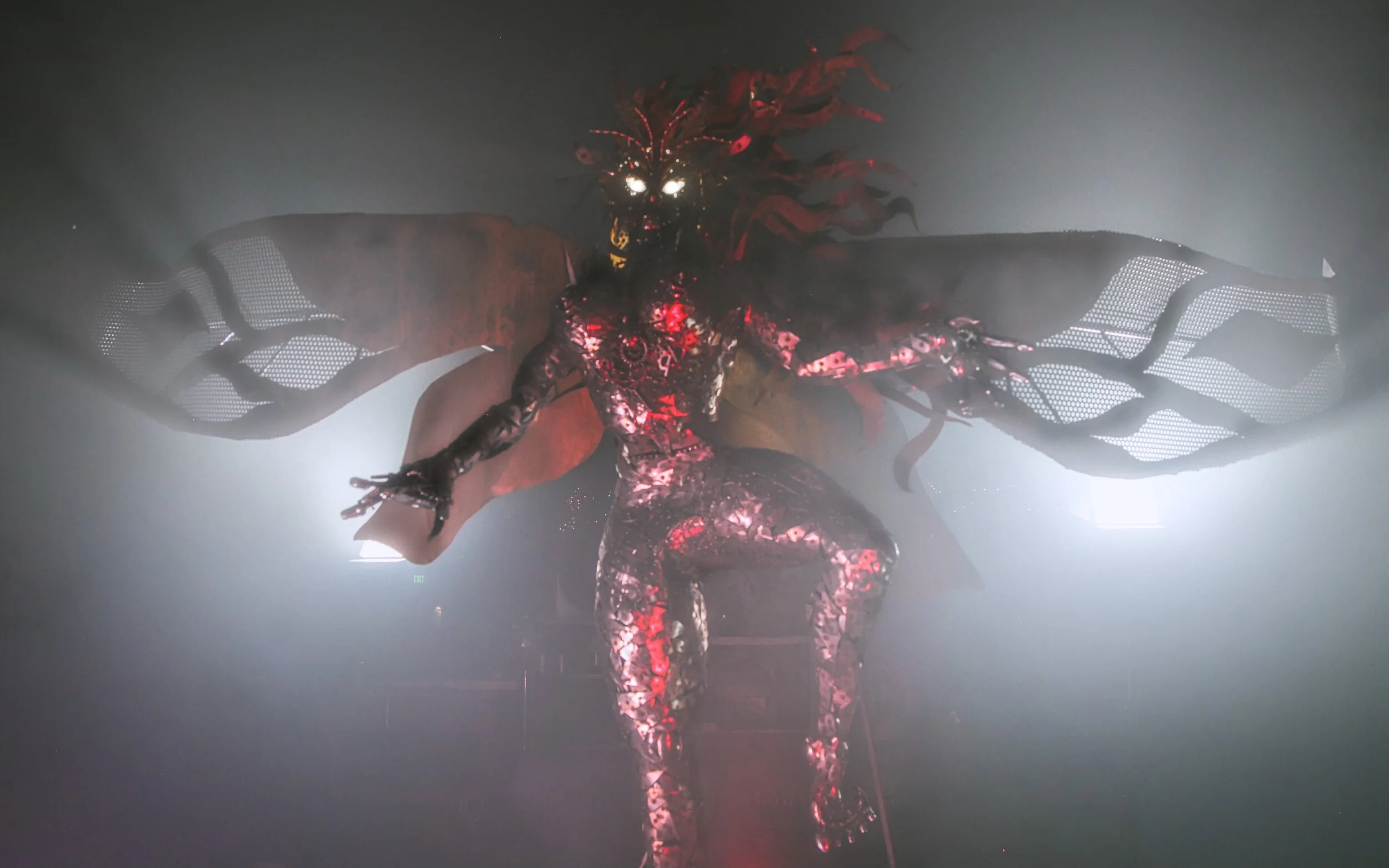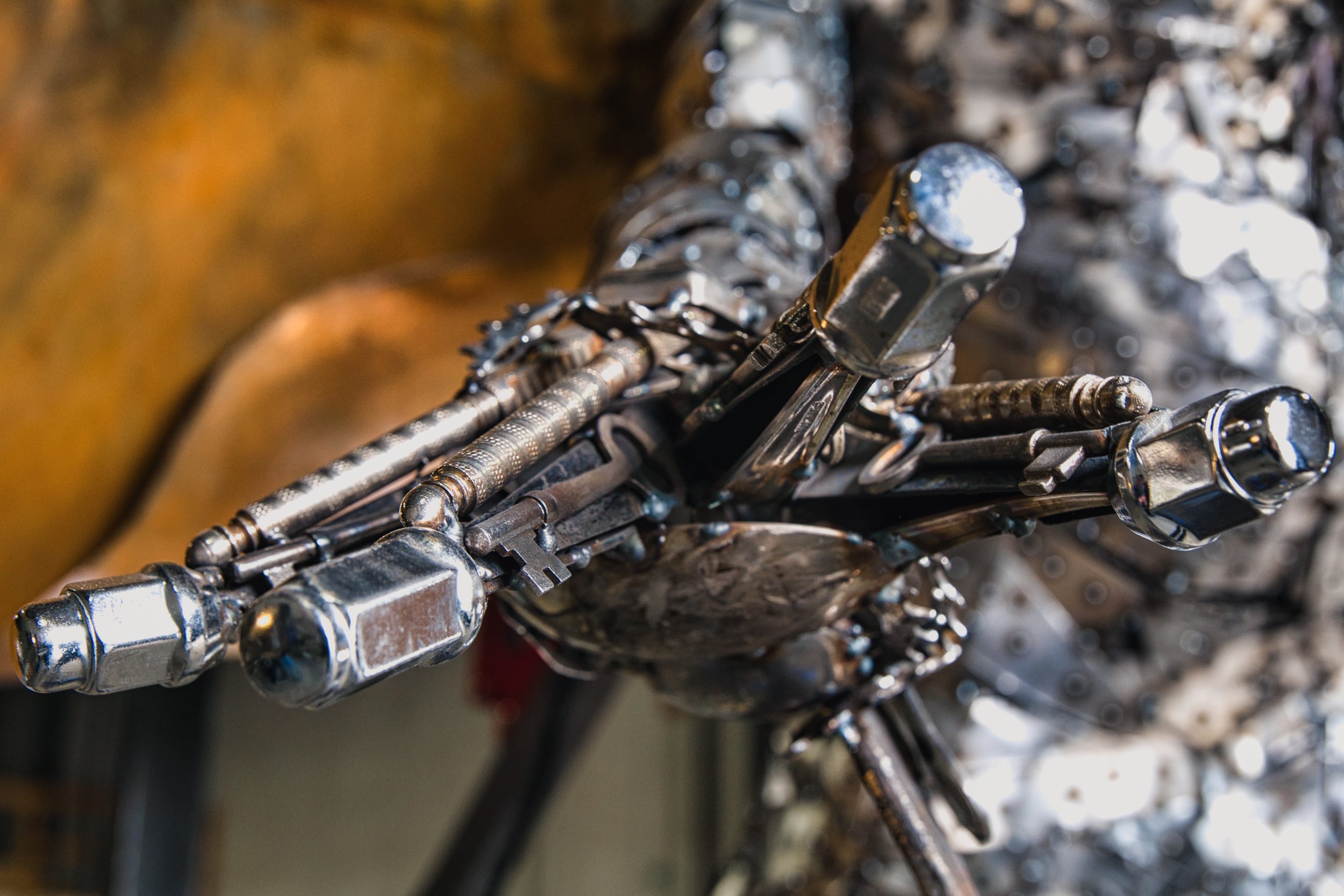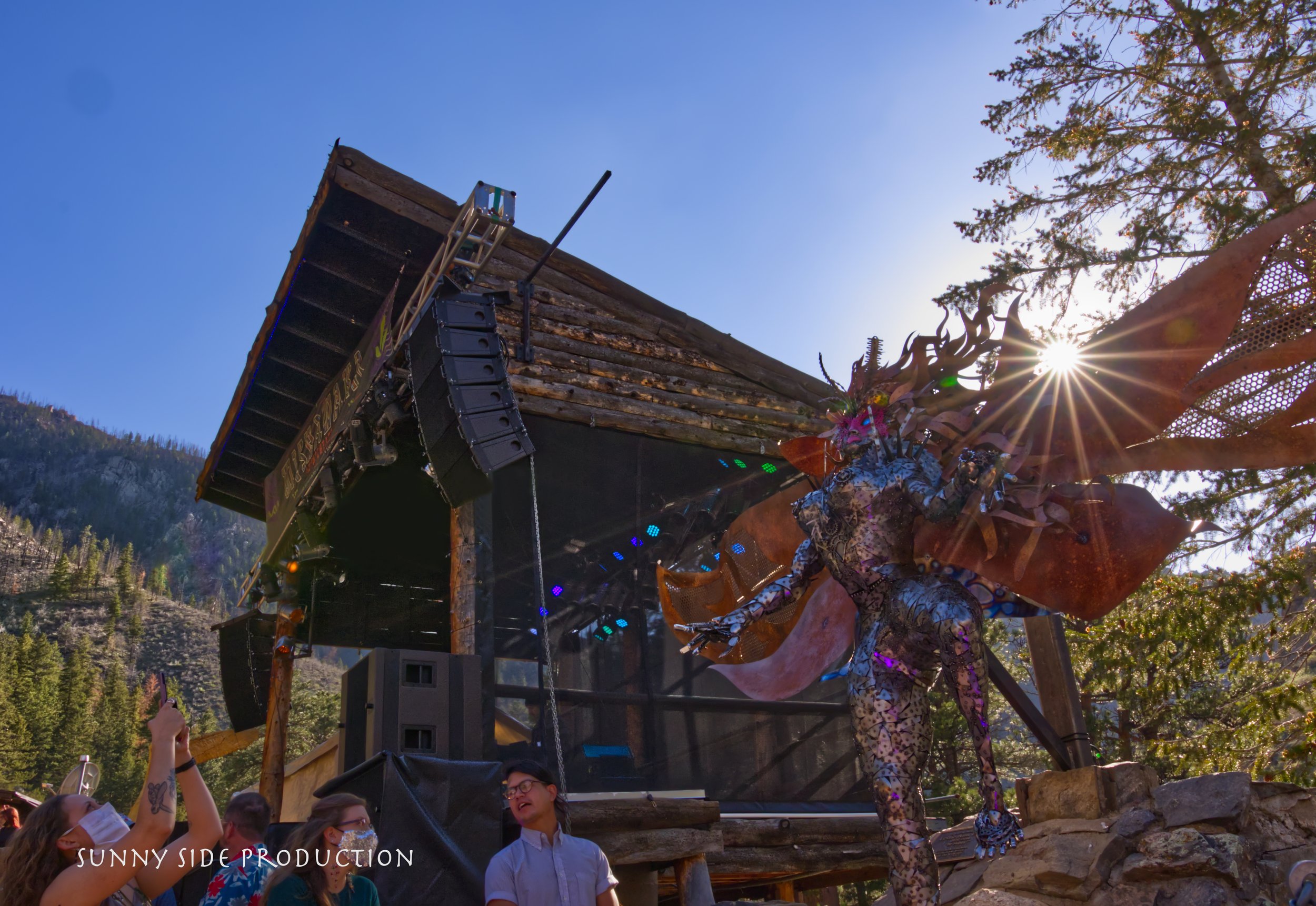
Using steel to tell a fairytale.
“Luna Mothra”
Mishawaka Amphitheatre
Poudre Canyon, CO.
















































LUNA MOTHRA EXHIBITION
Her nature, design and name of the artwork are all composites of various mythologies and histories, holding both cross-cultural and pop-cultural significance.
MYTHOS:
The Divine Feminine is a concept grounded in spirituality. It is typically understood as the aspect of the self, associated with creation, intuition, community, sensuality and collaboration. The Divine Feminine is often the healing force beyond the realm of the physical world, which traits include gentleness, empathy, humility and sensitivity.
TINKERBELL & FAIRIES
Luna Mothra is to be modeled after childlike wonder, and for good reason, it is worth examining the fairy and the Tinker Bell character. The fairy is the mascot of childlike wonder. Occupationally, a tinker was a tinsmith, or a person who made and mended tin, while the fairy, originally could only speak in “chimes,” like a tinkling bell. Tinker Bell was created by Sir James Matthew Barrie for his 1904 play “Peter Pan.” In a place called Neverland, a world of eternal youth, it is perhaps no wonder that the Fairy became the poster child.
The Fairy, as a supernatural entity most familiar to modern times, is the Sprite or Pixie of English folklore, an ethereal form solidified in the Victorian era. Fairies became builders of nature, and were likened to butterflies in the sense that they possessed the essential link between the energy of the sun and the plants of Earth. In the New Age, the fairy is also referred-to as a Deva, a spiritual force behind nature. For many theosophists, devas are numerous, and eternally busy, performing various functions on our planet to benefit the ecology and create a more harmonious natural world.
MOTHRA
Mothra is a fictional kaiju, (giant monster), of Japanese pop-culture-film fame. She is best known as a sidekick to the world’s most famous Japanese film export, Godzilla. She is often fighting beside him and even against him in some occasions. Typically portrayed as a sentient, giant, colorful moth, she has a one alias that clarifies her position in the hierarchy of beasts: the “Queen of the Monsters.” Created in 1961 by Shinichiro Nakamura, Mothra has always been a heroic character, variously portrayed as a protector of the Earth, Japan and her own island culture. In almost every film appearance she worshipped like a deity, and despite her physical form as “one of the monsters,” her character is regarded more like a spirit than a horrific beast. She is sometimes a twin, but is always accompanied by twin fairies known as the Shobjin. The Shobjin help Mothra to communicate with human civilization via telekinesis with the giant insect.
The dichotomy between the Godzilla/Mothra characters is worth magnifying: Godzilla is an irradiated monster created by the atomic bomb and awakened by human warfare. His original appearance portrayed his skin in keloid scars, (radiation burns), his eyelids were seared, his silhouette resembled a blooming mushroom cloud, and he even breathed radioactive breath. Godzilla is ultimately a metaphor of the horrors of war, and more specifically the bombings of Hiroshima and Nagasaki.
Mothra is not an irradiated monster, nor is she created from an atomic bomb, yet she is awakened by violence. Godzilla’s color was black charcoal, war-incarnate. Mothra appears in the sky with technicolor wonder, reds and yellows bright, even bioluminescent on some occasions. Unlike her comrade Godzilla, whom originally bestowed upon humanity a “taste of their own medicine” via becoming a living extinction event, Mothra intends on saving the Earth, and in turn, saving humanity. Mothra often guides and even saves the life of Godzilla on many occasions, making her sympathetic to see Godzilla as a product of human horror rather than a horror himself.
To further her sacredness, Mothra routinely fulfills a reoccurring destiny: in the face of destruction and adversity, she self-sacrifices herself. This self-sacrifice in the narrative of Mothra is usually to spare the Earth or its people from a similar fate, death or destruction. When approaching death, she often hatches offspring, or lays eggs, in a series of eternal rebirth. This rebirth is an allusion to the Samara doctrine of numerous Indian religions. Samsara means “wandering world” and as a term, connotes “cyclical change.” Mothra’s life begins as death occurs in the world: her egg
magically appears, from which she hatches into a larva or twin larvae, changing subsequently into a giant kaiju goddess, saving the world by fighting other monsters, dying and reincarnating.
LUNA & the NYMPH
In Greek mythology, the Nymph was a female nature spirit. They were regarded as tutelary creatures that cultivate and maintain nature, and thus set apart from the mythical beings generally associated with Greek folklore. Although they are depicted as eternally young, they are not immortal, but many, many years old, yet resemble ethereal, beautiful maidens. They are often associated with the air, seas, woods and water, for they are invariably bound to places, however as Roman and Latin poets wrote and produced more myth, the story of the nymph became almost exclusively bound to as divinities of the spring, stream and river.
In ancient Roman religion and myth, the goddess Luna was the divine embodiment of the moon, while in Greek mythology, she was known as Selene, who was regarded as the personification of the moon itself. She was categorized, (along with Sol, the sun), as one of the “visable gods,” and proposed guardians of peace over the world.